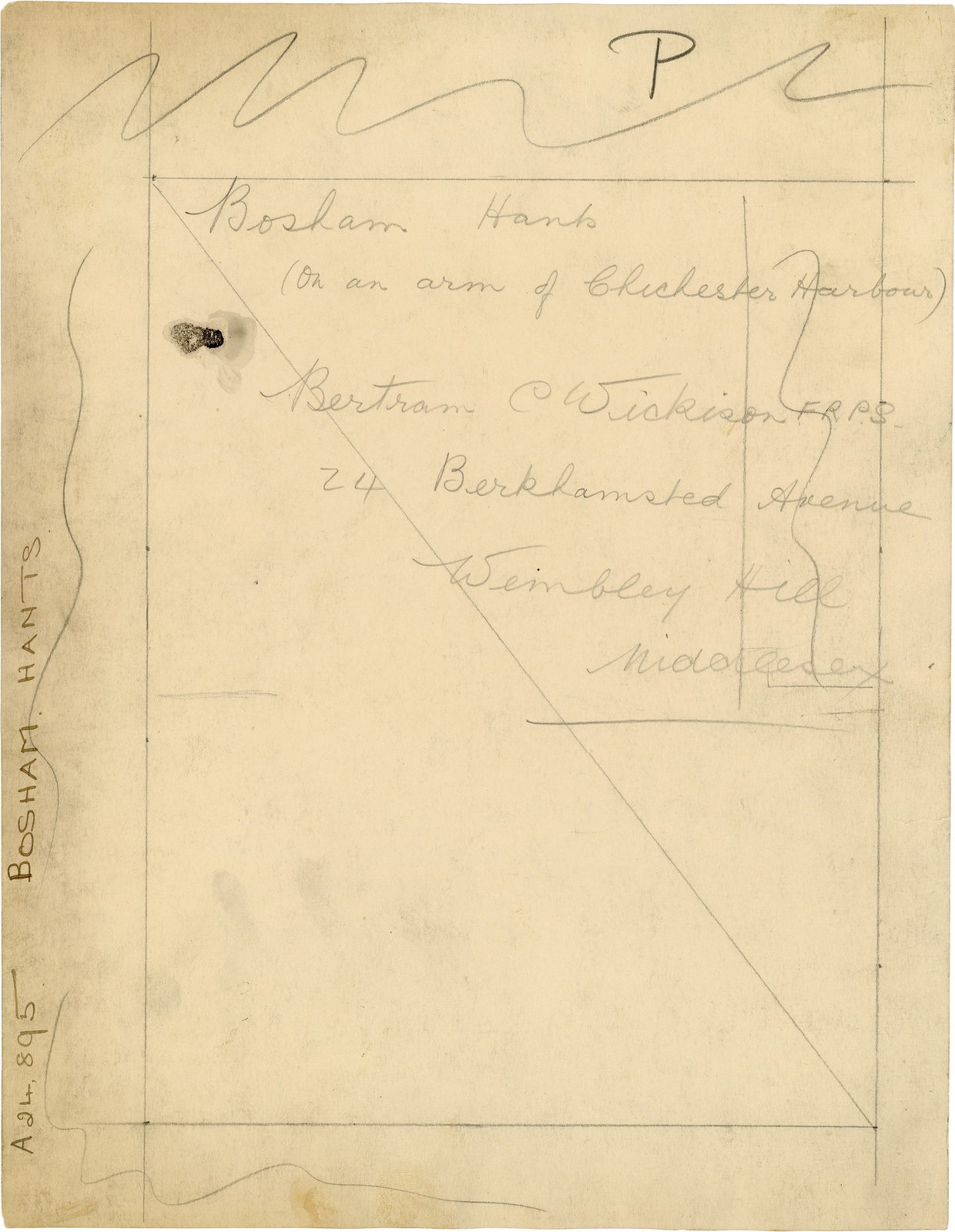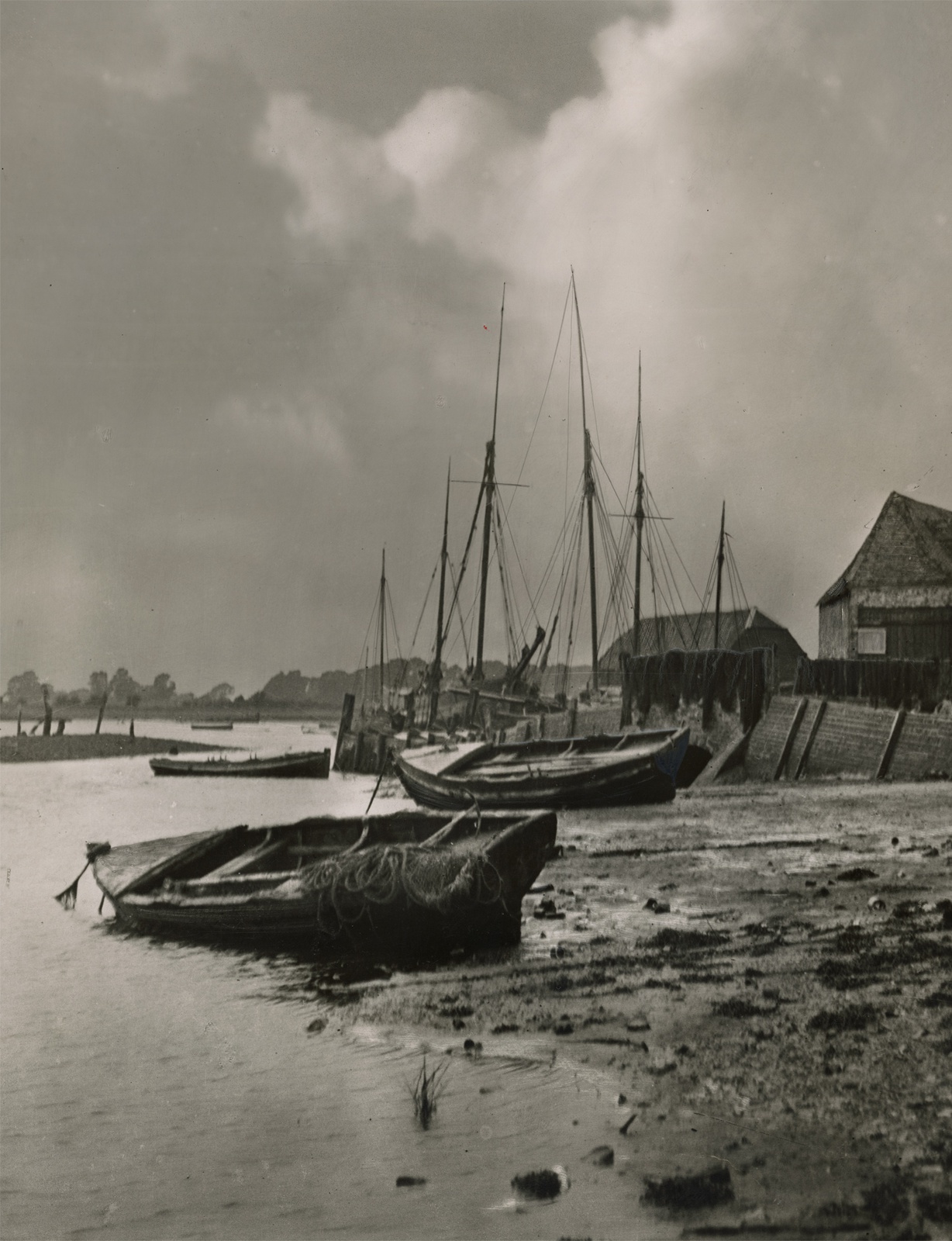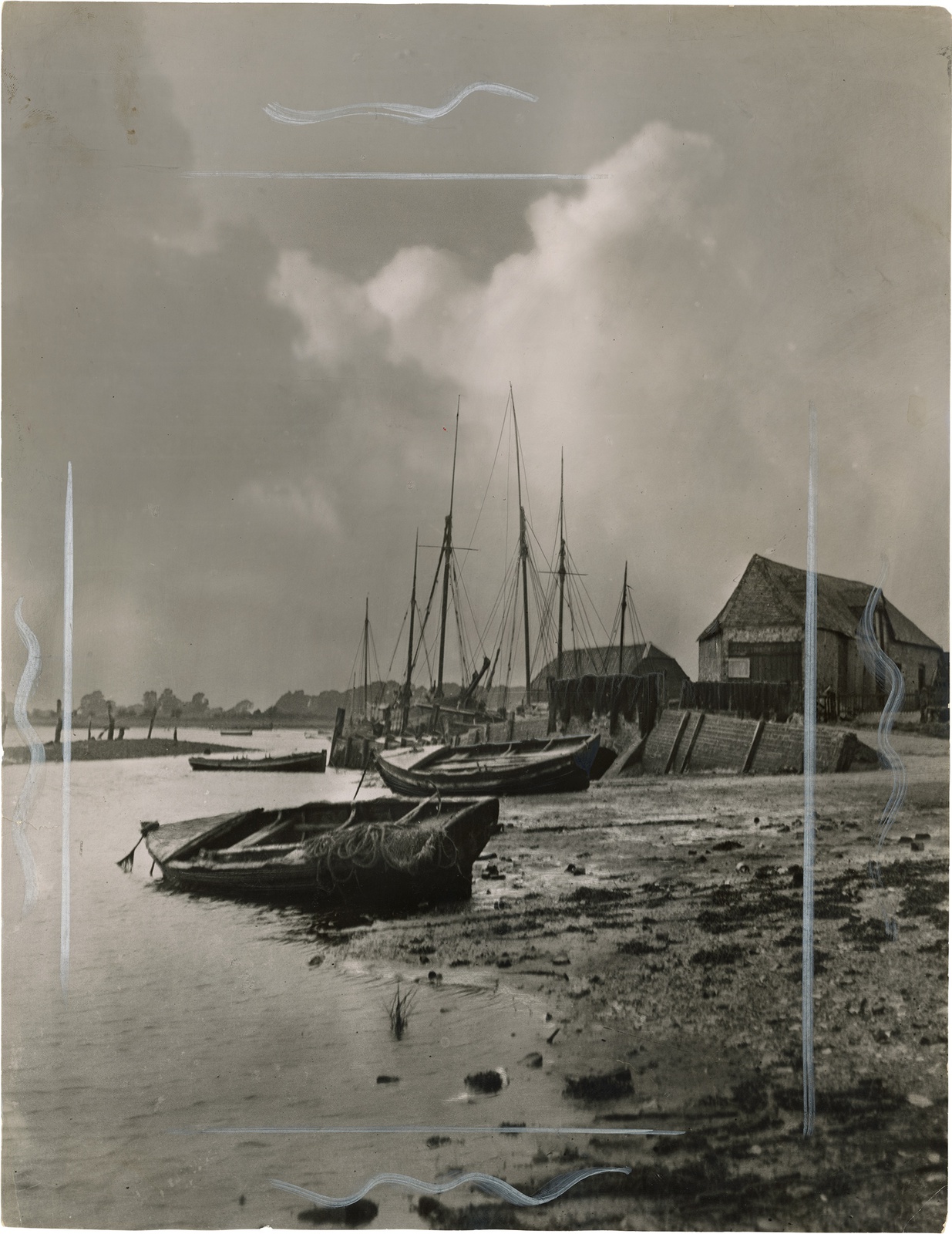
It is interesting to note the print has been ‘marked-up’ – the marks on the front and back of the print show the cropped image that was published in The Daily Telegraph. The silver gelatin print for sale made from the original glass plate negative measures 23x29cm. The marked-up crop measures 18x23cm. On the back of the print is the artist’s name Bertram C Wickison followed by FRPS (Fellow of the Royal Photographic Society) and his address ’24 Berkhamsted Avenue, Wembley Hill, Middlesex’.

Included with the original silver gelatin print is a second print made in 2024 from the high-resolution scan to show the cropped photograph that would have been published in the Daily Telegraph, shown below. This true-to-scale 18x23cm print is printed on Platinum Baryta 300gsm paper using archival inks to give an accurate reproduction of the tones in the original image, and is provided for interest.
Bosham Gallery Archive
Silver Gelatin Photograph
Print Size 23 x 29.5cm
'Marked-up' Size 18 x 23cm
Archive Reference BGA3356
Further images
Bertram C Wickison's photograph has been made very much in the pictorialist style of the day, an international art movement that dominated from 1880-1915 when an argument raged about whether photographs were art, and photographers deliberately made their pictures look like paintings. Photographers typically made their prints darker than we are used to seeing today, with subdued highlights, they used soft focus lenses to convey atmosphere, and often toned them warm brown rather than straight black and white.
Wickison’s photograph provides a rare portrait of the ‘run-arounds’ used by Bosham’s fishing fleet in Chichester Harbour in the early 1900s. In 1914 about 40 fishing boats worked from Bosham, here you can see six masts of the large fishing boats tied to Bosham Quay in the background. Boats would be away for 4 or 5 days at a time, fishing in the North Sea and all along the English Channel as far as Falmouth, and the north coast of France, landing their catches daily in Portsmouth or Southampton. However, back in Bosham, these large boats were unwieldy and with the tide leaving substantial areas of the harbour as mud banks for much of the time, the fishermen relied on small ‘run arounds’ like the two fishing boats that are the subject of Wickison’s photograph; they would have been used to fish in the harbour and convey oysters between the nursery and cleansing ponds. To read more about Bosham’s fishing fleet in the early 19th century click here and here.
Looking back 110 years it’s easy to romanticise the era, but life would have been tough as a fisherman, and I think this rare photograph captures the whole fishing fleet and atmosphere at Bosham Quay very accurately, in a particularly beautiful composition. It is rare in that most other photographers worked the other side of Bosham Quay and instead chose to make their subject the larger oyster smacks and trading schooners. Wickison would have stood in the sea with his glass plate camera on a tripod and has chosen to make the smaller fishing boats the main subject of his image, one with nets strewn on the stern. On the right can be seen two long lines of fishing nets drying on the walls and on the bridge over the mouth of the Bosham stream. Of note is the beautiful soft lighting, the boats are lit from the left suggesting it would have been made in the morning, probably in winter, and note the atmosphere and backdrop provided by an interesting cloud structure, which is lacking in the vast majority of other photographs of the period which have empty skies. Here the great cloud behind Bosham Quay in the west provides the perfect backdrop and sense of gravitas to the fishing fleet tied up at the Quay.
Provenance
Bertram C Wickison was an English photographer who worked very much in the pictorialist style of the day, and exhibited in the Royal Photographic Society’s annual exhibition from 1898 onwards. He was elected a member in 1910, and was awarded a Fellowship of the Society in 1914. This print was originally held by The Daily Telegraph which used to publish art photographs from exhibitions, and it is interesting to note the print has been ‘marked-up’ – the marks on the front and back of the print showing the cropped image that was published in the newspaper. The silver gelatin print for sale made from the original glass plate negative measures 23x29cm. The marked-up crop measures 18x23cm. On the back of the print is the artist’s name Bertram C Wickison followed by FRPS (Fellow of the Royal Photographic Society) and his address ’24 Berkhamsted Avenue, Wembley Hill, Middlesex’. The print is a silver gelatin print meaning that the image is embedded into the silver gelatin on the surface of the paper and is made with silver halide crystals which are noted for giving a wonderful luminance in the highlights – seen here in the sea, in the clouds and in the bright splashes of side-lighting hitting the bows of the fishing boats in the foreground. To read more about how silver gelatin prints are made click here.
Like all prints that have had a working life and been ‘marked-up’ for publication, this original silver gelatin print shows the usual markings of handling for a print that is 110 years old. Far from detracting from the enjoyment of the photograph the printer’s wavy crop marks tell the story of the print, and are a charming reminder of how original prints were reproduced in newspapers and books. There is one small tear 15mm long in the lower left area and minor handling creases, but as you will note they are not visible in the scans and do not disrupt the enjoyment of such a rare photograph, as there is no missing image in the silver gelatin surface. The print has been held for the majority of its life since 1914 by The Daily Telegraph, and I acquired it from a dealer in 2023. With regard to framing, I would recommend a hinge joint is used with archival tape to mount the print to acid-free mountboard, and I would suggest a flat-fronted black oak box frame with museum glass is used. Included with the original silver gelatin print is a second print made in 2024 from the high-resolution scan to show the cropped photograph that would have been published in the Daily Telegraph, shown below. This true-to-scale 18x23cm print is printed on Platinum Baryta 300gsm paper using archival inks to give an accurate reproduction of the tones in the original image, and is provided for interest.



